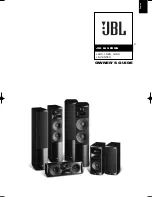
Line Array User’s Manual
17
Ensure that public and personnel are not allowed to pass beneath the system during the installation process. The
work area should be isolated from public access.
Never leave the system unattended during the installation process.
Do not place any object, no matter how small or light, on top of the system during the installation procedure. The
object may fall when the system is flown and is likely to cause injury.
Secondary safety steels must be installed once the system has been flown to the operating height. Secondary steels
must be fitted irrespective of requirements of the local safety standards applicable to the territory.
Do not fly the system over areas to which the audience has access.
Ensure that the system is secure and prevented from pivoting about the motor hoist. Avoid any form of dynamic
loading to the assembly.
NEVER attach any item to the RHANG hardware other than the RHANG accessories.
When flying outdoor systems ensure that the system is not exposed to wind or snow loads and is protected from
rainfall.
The RHANG flying hardware requires regular inspection. We recommend that the system be inspected visually at
every opportunity. For more information on visual inspection procedures and common problems with rigging
components, download the Rigging Inspection Poster from ATM Flyware (http://www.atmflyware.com/flyhome.html).
When de-rigging the system ensure that the same care is given to the procedure as for the installation. Pack RHANG
components carefully to prevent damage during transit.
Ground Stacking Loudspeakers Safely
Statistically, many more injuries occur due to unstable ground stacked PA systems than to improperly flown systems.
There are several reasons for this fact, however the message is clear.
Always survey the supporting structure upon which a ground stack is to be built. Always look beneath PA wings to
inspect the deck support and if necessary ask for the stage scrims and dressings be removed to allow access.
If the stage surface slopes, as it does in some theatres, ensure that the system is prevented from sliding forward due to
vibration. This may require attaching wood battens to the stage floor.
For outdoor systems, ensure that that the system is protected from wind forces which might cause the ground stack
to become unstable. Wind forces can be huge, especially upon large systems and should never be underestimated.
Observe meteorological forecasts, calculate the “worst case” effect upon the system prior to erection and ensure that
the system is secured appropriately.
Take care when stacking cabinets. Always employ safe lifting procedures and never attempt to build stacks without
sufficient personnel and equipment.
Never allow anyone, whether operators, artists or members of the public, to climb onto a ground stacked PA system.
Anyone who needs to climb over 6 feet high should be fitted with suitable safely equipment including a clip-on harness.
Please refer to local Health and Safety legislation in your territory. Your Renkus-Heinz distributor can help with advice
on access to this information.
Apply the same attention to all safety matters when de-stacking systems.
Be aware that safety procedures are as important in the truck and in the warehouse as they are at the venue.
Training & Education
Correct training is fundamental to safe practice when working with loudspeaker flying systems. We recommend that
users contact local industry associations for information on appropriate courses.














































